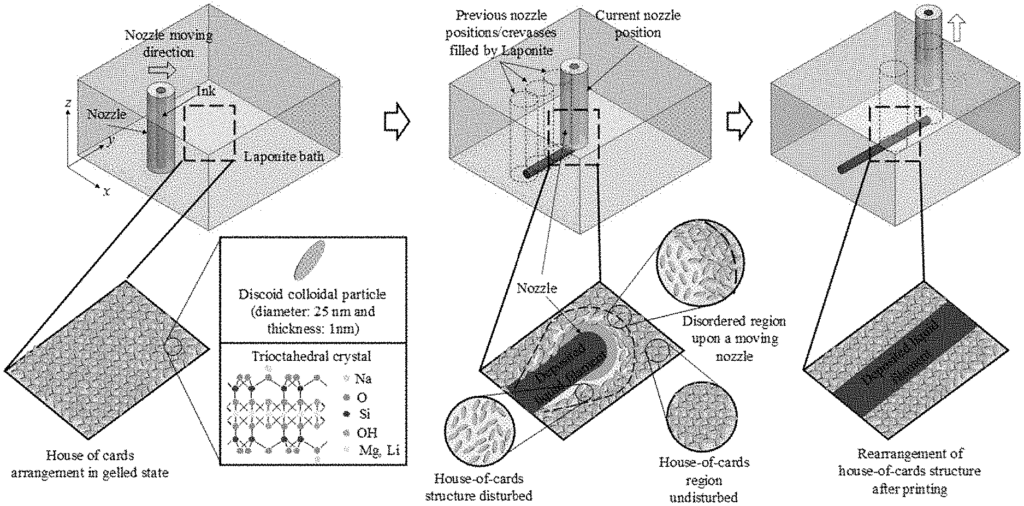Invented by Yong Huang, Yifei Jin, Ashley M. Compaan, Wenxuan Chai, Chengcheng Liu, University of Florida Research Foundation Inc
The market for methods of 3D printing and systems has been rapidly growing in recent years. 3D printing, also known as additive manufacturing, is a process of creating three-dimensional objects by layering materials on top of each other. This technology has revolutionized the manufacturing industry by allowing for the creation of complex and customized products that were previously impossible to produce.
There are several methods of 3D printing, including Fused Deposition Modeling (FDM), Stereolithography (SLA), Selective Laser Sintering (SLS), and Digital Light Processing (DLP). Each method has its own unique advantages and disadvantages, and the market for these methods is constantly evolving.
FDM is the most common method of 3D printing and is widely used in the consumer market. It is a relatively simple and affordable method that uses a thermoplastic filament to create objects layer by layer. SLA, on the other hand, uses a liquid resin that is cured by a laser to create objects with high precision and detail. SLS uses a laser to sinter powdered materials, such as metal or plastic, into solid objects. DLP is similar to SLA but uses a projector to cure the resin instead of a laser.
The market for 3D printing systems is also expanding rapidly. These systems include the hardware, software, and materials needed to create 3D printed objects. The market is currently dominated by a few major players, such as Stratasys, 3D Systems, and EOS, but there are also many smaller companies and startups entering the market.
The global market for 3D printing is expected to continue to grow at a rapid pace in the coming years. According to a report by MarketsandMarkets, the market is projected to reach $34.8 billion by 2024, with a compound annual growth rate of 25.76% from 2019 to 2024. The growth is being driven by several factors, including the increasing demand for customized products, the growing adoption of 3D printing in various industries, and the development of new and innovative materials and technologies.
The market for methods of 3D printing and systems is also being driven by the increasing availability of affordable desktop 3D printers. These printers are becoming more accessible to consumers and small businesses, allowing them to create their own customized products and prototypes. This is leading to a democratization of manufacturing, where anyone with a 3D printer can become a manufacturer.
In conclusion, the market for methods of 3D printing and systems is rapidly growing and evolving. The increasing demand for customized products, the growing adoption of 3D printing in various industries, and the development of new and innovative materials and technologies are driving the growth of the market. As the technology continues to advance and become more accessible, the possibilities for 3D printing are endless.
The University of Florida Research Foundation Inc invention works as follows
Embodiments” of the present disclosure are used to provide three-dimensional printing methods, apparatuses and other similar items.
Background for Methods of 3D printing and Systems
DISCUSSION
A Support Bath
B) Self Supporting Three Dimensional Structure
Example 1
Laponite as a Support Bath Material for Extrusion printing
Particle Imaging Velocimetry Analysis
Printing mechanism in a Laponite bath
Alginate Structure Manufacturing
Gelatin Based Cellular Structure Fabrication
SU-8 Structure Fabrication
Conclusions
Methods:
Laponite Nanoclay Colloid Preparation
Building Material Preparation”.
Printing Systems and Printing Protocols
Cellular Constructs fabrication and cell viability and metabolic activity evaluation
Observation of Laponite bath Response and PIV analysis of Velocity field
REFERENCES TO EXAMPLE 1
Example 2
Yield Stress
The Yield Stress Range for Some Commonly used Fluids
